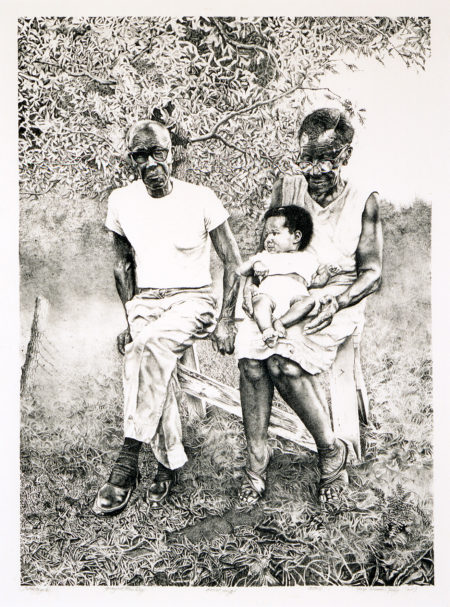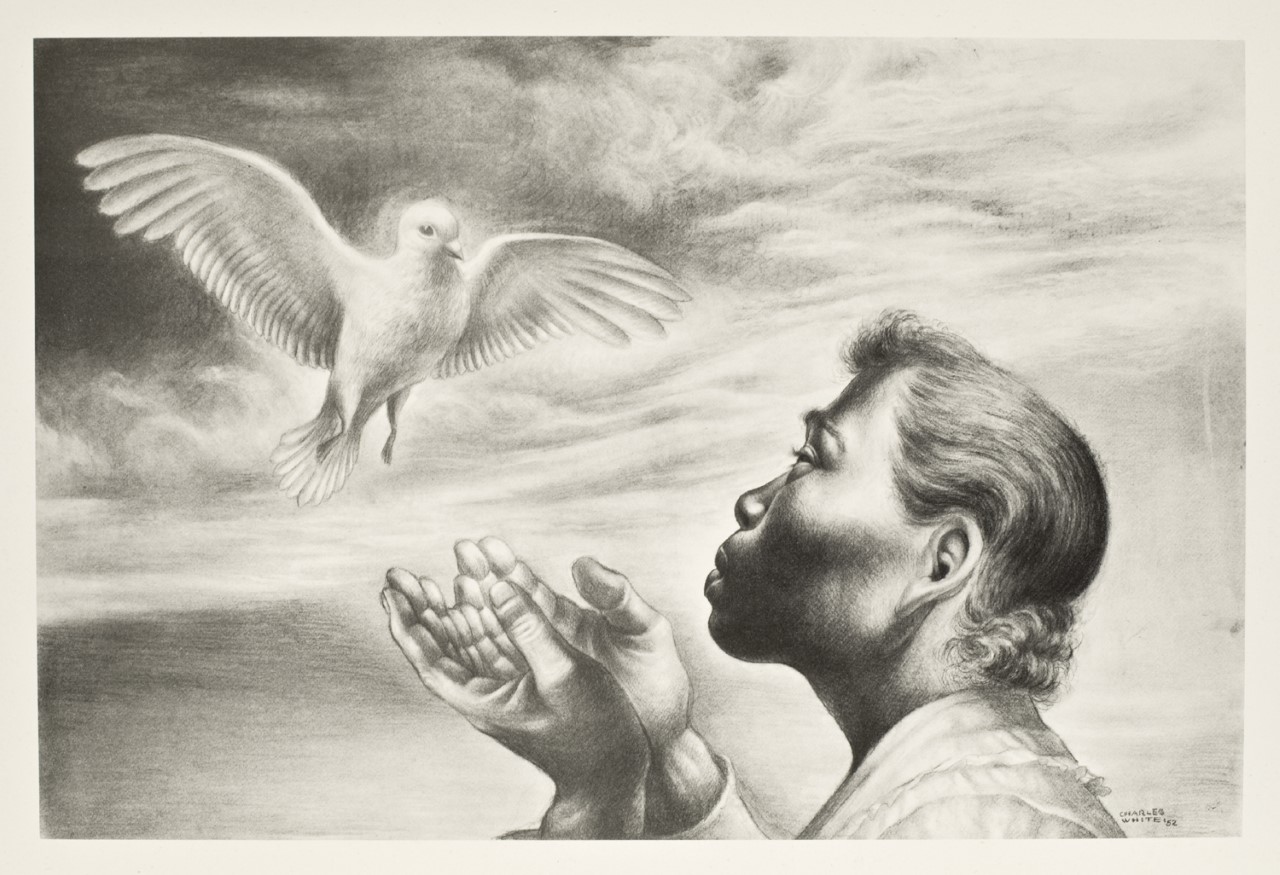Family picnics, bar-b-ques, church gatherings, and community festivals have been held for 155 years to commemorate the abolition of slavery. Most people associate the end of American slavery with The Emancipation Proclamation. The executive order authored by Abraham Lincoln with input from Frederick Douglass, was issued on January 1, 1863, and instantly freed enslaved people in the Confederate states (at least on paper). However, an often lesser known fact is that compliance with the proclamation did not reach the entirety of Southern states until June 19th, 1865, when Union general, Gordon Granger arrived in Galveston, Texas, to read and enforce the proclamation for the first time. For this reason thousands of black men and women remained in bondage for more than two years after they had been legally set free. Since that time, June 19 or Juneteenth, has marked for many the true liberation of African Americans from legalized slavery in the United States.

This work depicts the artist’s daughter with his great aunt and uncle.
Juneteenth celebrations flourished in the late nineteenth century among formerly enslaved people and their descendants. The occasion was often associated with the gathering family members who had been separated under the institution of slavery. The cultural holiday fell into decline during the early 20th century as living memory of the events of June 19th, 1865, diminished and textbooks emphasized the date of Lincoln’s Proclamation over the actual enforcement of the proclamation. During the Civil Rights era Juneteenth became part of a renewed call for freedom as student marchers and demonstrators wore Juneteenth freedom buttons and celebrations of the date resurged with community festivals and parades. In 1980, Texas became the first of now forty-seven states to recognized Juneteenth as an official state holiday or observance.

Today Juneteenth celebrates African American freedom and achievement. In the wake of the most recent protests against police brutality and systemic racism, it also serves as an important reminder that the work to fulfill America’s promise of equality and justice is ongoing.
—Sara Arnold, Director of Curatorial Affairs, Gibbes Museum of Art
Published June 19, 2020
Top image: Let’s Walk Together, 1953, By Charles Wilbert White (American, 1918–1970); Lithograph on paper; Gibbes Museum of Art, Gift of Dr. and Mrs. Monnie Singleton; 2006.004.0005.

